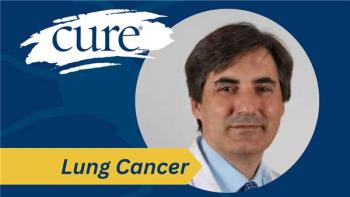
Xermelo Gains FDA Approval for Carcinoid Syndrome Diarrhea
Xermelo (telotristat ethyl) was approved by the Food and Drug Administration (FDA) to treat diarrhea in patients with carcinoid syndrome.
The Food and Drug Administration (FDA) approved Xermelo (telotristat ethyl) for use in combination with somatostatin analog (SSA) as a treatment for carcinoid syndrome diarrhea in patients with metastatic neuroendocrine tumors (NETs) that cannot be adequately controlled by SSA therapy alone, according to a statement from the drug's developer, Lexicon Pharmaceuticals.
According to a statement from the FDA, the safety and efficacy of Xermelo were established in a 12-week, double-blind, placebo-controlled trial in 90 adult participants with well-differentiated metastatic NETs and carcinoid syndrome diarrhea. Despite the use of SSA at a stable dose for at least three months, the patients continued t have four to 12 daily bowel movements.
Patients continued SSA therapy and were randomized to Xermelo or placebo three times daily. In the Xermelo arm, 33 percent of patients had an average reduction of two bowel movements per day compared with 4 percent of patients on the placebo arm.
“Today’s approval will provide patients whose carcinoid syndrome diarrhea is not adequately controlled with another treatment option,” Julie Beitz, M.D., director of the Office of Drug Evaluation III in the FDA’s Center for Drug Evaluation and Research, said in a statement.
The application for Xermelo submitted by Lexicon Pharmaceuticals was based on data from the phase 3 TELESTAR trial, which enrolled 135 patients with metastatic NETs and a documented history of inadequately controlled carcinoid syndrome (defined as four or more daily bowel movements). Patients were randomized to receive oral Xermelo three times per day at 250 mg (45 patients), 500 mg (45 patients) or placebo (45 patients). Treatment with a somatostatin analog was maintained throughout the trial. Xermelo was approved at the 250 mg dose.
Patient characteristics were similar across arms, with a mean age of 64 years. The primary endpoint of the study was a reduction in the mean number of daily bowel movements over a 12-week double-blind period. Secondary outcome measures included cutaneous flushing episodes, abdominal pain, and changes in urinary 5-hydroxyindoleacetic acid (u5-HIAA), which is the primary metabolite of serotonin.
After 12 weeks of follow-up, average daily bowel movements were reduced by 29 percent and 35 percent with the 250 mg and 500 mg doses of Xermelo, respectively. The 12-week decline in bowel movements was 17 percent with placebo. At least a 30 percent reduction in bowel movement frequency for 50 percent or more of the study was achieved for 44 percent of patients in the 250 mg arm and for 42 percent in the 500 mg group compared with 20 percent with placebo.
In the 250 mg arm, patients experienced 1.71 fewer average daily bowel movements compared with a reduction of 0.87 in the placebo arm. Those treated with a 500 mg dose of Xermelo experienced 2.11 fewer average daily bowel movements compared with baseline.
At the 12-week analysis, the 250 mg dose reduced u5-HIAA levels by 30.1 mg per 24 hours compared with placebo. The 500 mg dose of Xermeloreduced u5-HIAA levels by 33.8 mg per 24 hours compared with placebo. In the placebo arm, u5-HIAA levels increased from baseline by 11 mg/24 hours.
Patients treated with Xermelo did not experience a statistically significant reduction in flushing and abdominal pain.
The therapy was well tolerated, with fewer adverse events (AEs) seen in the 250 mg arm compared with placebo. Those in the 500 mg arm experienced a higher rate of AEs compared with the placebo and 250 mg arms. All-grade treatment-related AEs occurred in 82 percent of patients treated with the 250 mg dose of Xermelo compared with 93 percent with the 500 mg dose and 87 percent with the placebo. AEs led to treatment discontinuation for 7 percent of patients in each Xermelo arm compared with 13 percent with placebo.
Eight patients (18 percent) treated with the 500 mg dose of the therapy experienced depression versus three (6.7 percent) with placebo and two with the 250 mg dose (4.4 percent). Mild to moderate nausea was experienced by six patients in the 250 mg arm (13.3 percent) versus 13 (28.9 percent) and 5 (11.1 percent) with the 500 mg dose and placebo, respectively. At the time of the analysis, 87 percent of patients were receiving open-label Xermelo at 500 mg.
“The approval of Xermelo establishes a new treatment option for patients with carcinoid syndrome diarrhea that is inadequately controlled by SSA therapy,” said Matthew H. Kulke, M.D., TELESTAR primary investigator, director of the Program in Neuroendocrine and Carcinoid Tumors at Dana Farber Cancer
Institute and Professor of Medicine, Harvard Medical School said in a statement. “Inhibition of tumoral serotonin production represents a novel approach for patients with this condition. Studies have shown that Xermelo can reduce the debilitating effects of carcinoid syndrome diarrhea and has a favorable efficacy and safety profile in patients who currently have limited treatment options.”





